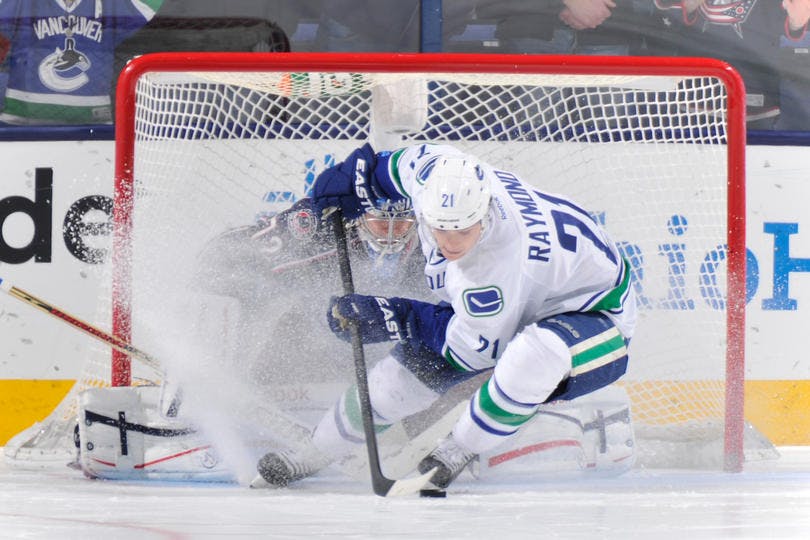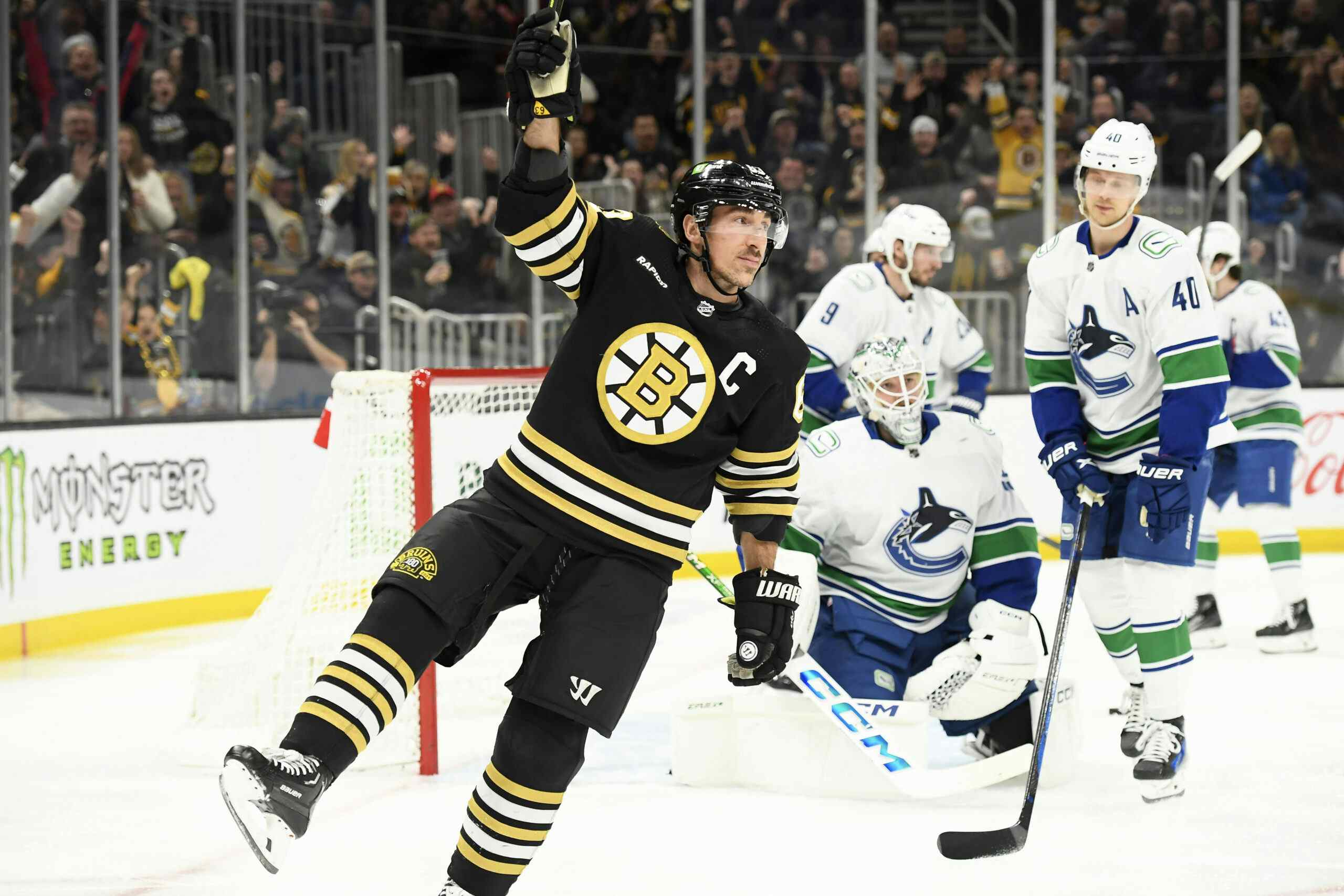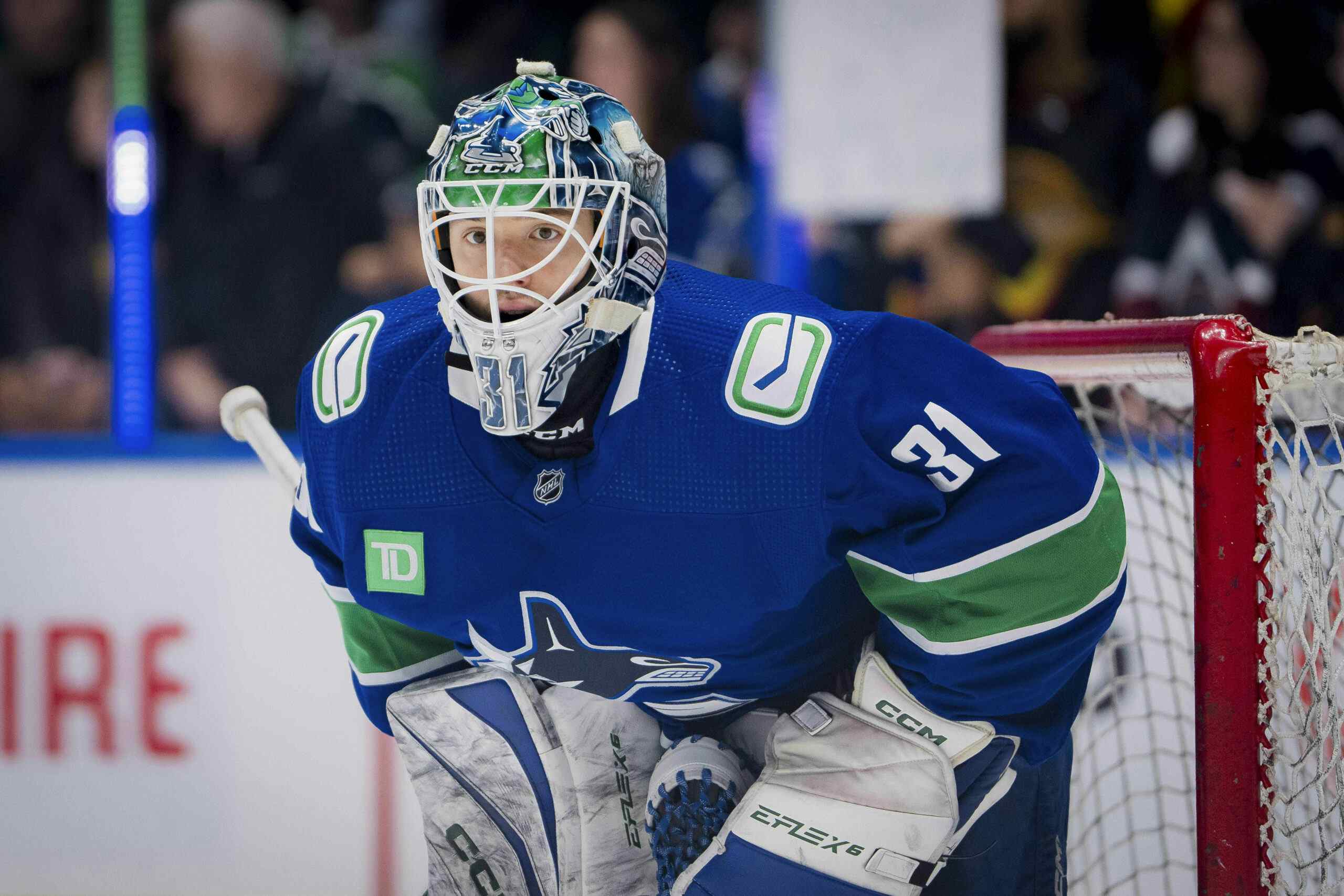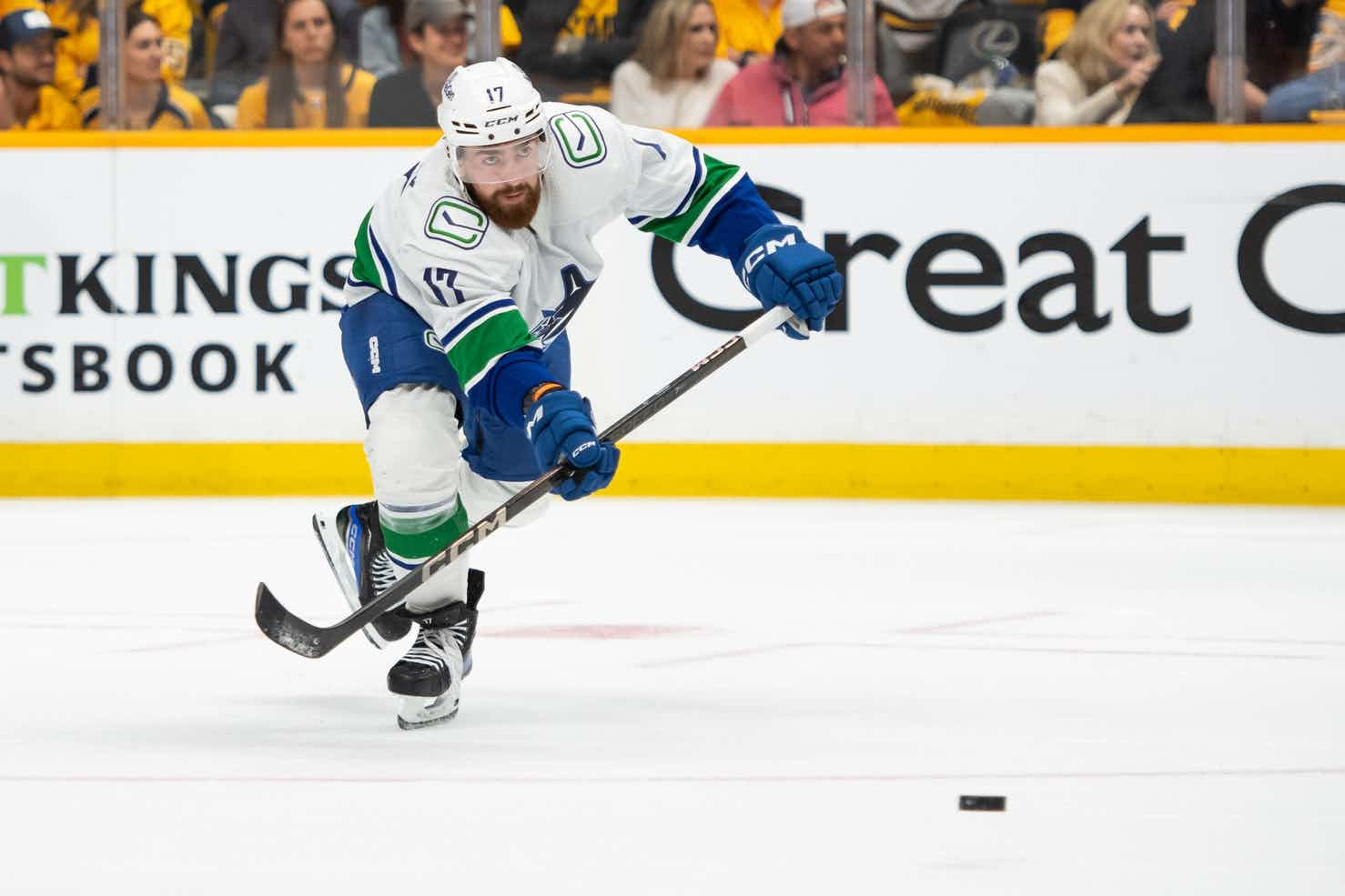Full Metal Blue Jackets

Mason Raymond earns his team an extra point in the
Cool shot by Jamie Sabau/NHLI via Getty Images
From an entertainment and results perspective, this now concluded Canucks road trip was pretty much the road trip from hell. It began last Thursday in Ohio, as the Canucks played a joyless contest against the Blue Jackets and lost in over-ime. From there the Canucks ventured to Minnesota and got the snot kicked out of them by the Wild on Sunday. Finally, like good tin-soldiers, they returned to Ohio on Thursday to try and salvage some dignity. They managed too by the skin of their teeth, as Roberto Luongo, Mason Raymond and Jason Garrison led the club to a 2-1 victory in the skills competition.
Analysis and scoring chance data on the other side of the jump.
We’ll begin with the core numbers, the scoring chance data. The Canucks were handily out-chanced by the Blue Jackets in this one, recording only seven scoring chances to Columbus’ fifteen. At even-strength the differential was even more pronounced as the Blue Jackets recorded fourteen quality looks in comparison to Vancouver’s four. Oddly enough Columbus didn’t record a single scoring chance in the thirteen minutes during which they held a one goal lead, so with the score-tied Columbus kicked the Canucks’ teeth in to the tune of 15 to 3.
Roberto Luongo had a strong game tonight, and I’d expect he’ll get a bit of burn here. In Kesler and BIeksa’s absence, the Canucks need a goaltender to get hot and steal some games for them, and I tend to think Luongo is the better bet to do that at the moment. He recorded another quality start tonight, stopped ten of twelve difficult shots and twenty-six of twenty-seven overall. He’s pretty much performing like an elite goaltender.
Coming off of his worst game in a Canucks uniform – and to his credit, there aren’t too many other candidates because he’s as solid as a rock – Dan Hamhuis was easily Vancouver’s best defenseman in this one. While the Canucks got tuned in the scoring chance battle, he managed to salvage a -1 individual chance differential against Columbus’ best players. He also led the Canucks in scoring chances taken thanks to a flurry of opportunities on the power-play in the middle of the second period.
Jason Garrison scored using a shot he didn’t use much last season, but that he’s used to great effect this year. In fact, both of his most recent two goals have come off of similar shots. Rather than winding up for a big slapper, Jason Garrison’s third and fourth goals of the year have come off of chip shots for which he only wound up about half way. Garrison’s sand-wedge seems like a pretty effective weapon, as the shot goes hard and low at the opposition netminder.
A bit ironic that Dan Hamhuis had a flurry of power-play opportunities, and then Jason Garrison is the guy who beats Bobrovsky just as the power-play expires. That was the best power-play shift the Canucks have had in four weeks, so I would probably leave Dan Hamhuis on the top-unit for now. But that sequence should reenforce which Canucks defenseman (non-Alex Edler category) has the most power-play upside going forward.
I want to talk about Cam Barker, who has exceeded my non-existent expectations for him in his limited action so far this season. Yes his defense leaves a lot to be desired (check out the Cam Atkinson deflection in the first period, in which Cam Barker gets completely man-handled in the slot by Mark Letetsu), but the Canucks are controlling play with Barker on the ice in third pairing minutes. Moreover, Barker is attempting a lot of shots and has an uncanny ability to walk the line and thread the needle past the first defender in the offensive end. I wouldn’t say that Barker has been "spectacular" or that he deserves a place in the top-four or anything, he most certainly does not, but he looks to be performing more or less the way you’d want an offensive specialist eighth defenseman to perform. So yeah, I’ll give him some credit for that.
The Sedin twins had a really good game, despite struggling to convert their territorial dominance into much of anything in the way of scoring chances. They battled Fedor Tyutin and Jack Johnson for most of the evening and I’d conservatively estimate that Columbus’ top-pairing got away with somewhere in the neighbourhood of eight obvious holding penalties, and an obvious slashing penalty in the contest. Goals are down league wide and apparently the NHL is going to discuss bigger nets and smaller goaltending equipment as possible remedies to that situation. I’ve got an alternative proposal though: how about just calling the rules that are in place? Seriously, after Tuesday night’s game Fedor Tyutin is no longer an NHL defenseman. Instead he’s morphed into Henrik Sedin’s permanent backpack.
Beyond the twins, the Canucks forwards were brutal. The Chris Higgins at center experiment was, in my view, an abject failure as his line got smoked by the possession data and by the chance data as well. Andrew Ebbett had some good moments on the forecheck in this one and his line faired a bit better by the possession numbers, but realistically it was more of the same from his group with Mason Raymond and Jannik Hansen as well.
Hate to say it, but the Canucks have only one winger who can legitimately hold his own as a center and it’s not Mason Raymond, nor is it Chris Higgins. It’s the Sedin twins’ triggerman Alex Burrows. Burrows won’t win face-offs as a centreman, but if you play him with a couple of quality possession forwards (like Hansen and Higgins) he can at least do battle against the oppositions top-line and allow Alain Vigneault to play the matchup game he excels at. The problem with that is that Burrows makes the twins better, so you incur some opportunity cost if you bump him down the lineup. At this point, I’d consider doing that (and playing either Booth or Kassian with the twins) because the middle of Vancouver’s lineup is just getting gutted in Ryan Kesler’s absence.
Tom Sestito found himself benched for much of the third period. To my eyes he hasn’t worked out too well as a Volpatti replacement and I’d be surprised if he was still on the roster come this weekend.
Scoring Chance Data
A chance is counted any time a team directs a shot cleanly on-net from within home-plate. Shots on goal and misses are counted, but blocked shots are not (unless the player who blocks the shot is “acting like a goaltender”). Generally speaking, we are more generous with the boundaries of home-plate if there is dangerous puck movement immediately preceding the scoring chance, or if the scoring chance is screened. If you want to get a visual handle on home-plate, check this image.
Scoring Chance Totals:
| Chance Totals | 1st | 2nd | 3rd | OT | Total |
|---|---|---|---|---|---|
| Columbus (EV) | 3 (2) | 3 (3) | 9 (9) | 0 (0) | 15 (14) |
| Vancouver (EV) | 1 (1) | 4 (1) | 2 (2) | 0 (0) | 7 (4) |
Individual Scoring Chances
| Individual Chances | Chances Taken | Chance Assists | Total |
|---|---|---|---|
| Dan Hamhuis | 3 | 0 | 3 |
| Daniel Sedin | 2 | 1 | 3 |
| Henrik Sedin | 0 | 2 | 2 |
| Alex Burrows | 1 | 0 | 1 |
| David Booth | 1 | 0 | 1 |
Individual Scoring Chance Differential
| Chance Diff. | EV F – A | SH F – A | PP F – A | Total F – A |
|---|---|---|---|---|
| Dan Hamhuis | 3 – 4 | 0 – 0 | 3 – 0 | 6 – 4 |
| Jason Garrison | 2 – 4 | 0 – 0 | 0 – 0 | 2 – 4 |
| David Booth | 1 – 5 | 0 – 0 | 0 – 0 | 1 – 5 |
| Chris Tanev | 1 – 6 | 0 – 1 | 0 – 0 | 1 – 7 |
| Zack Kassian | 1 – 7 | 0 – 0 | 0 – 0 | 1 – 6 |
| Alex Burrows | 3 – 2 | 0 – 0 | 3 – 0 | 6 – 2 |
| Cam Barker | 1 – 4 | 0 – 0 | 0 – 0 | 1 – 4 |
| Chris Higgins | 1 – 5 | 0 – 1 | 0 – 0 | 1 – 6 |
| Mason Raymond | 0 – 5 | 0 – 0 | 0 – 0 | 0 – 5 |
| Daniel Sedin | 3 – 2 | 0 – 0 | 3 – 0 | 6 – 2 |
| Alex Edler | 1 – 6 | 0 – 1 | 3 – 0 | 4 – 7 |
| Andrew Ebbett | 0 – 4 | 0 – 0 | 0 – 0 | 0 – 4 |
| Tom Sestito | 0 – 1 | 0 – 0 | 0 – 0 | 0 – 1 |
| Dale Weise | 0 – 3 | 0 – 0 | 0 – 0 | 0 – 3 |
| Henrik Sedin | 3 – 2 | 0 – 0 | 3 – 0 | 6 – 2 |
| Jannik Hansen | 0 – 3 | 0 – 1 | 0 – 0 | 0 – 4 |
| Maxim Lapierre | 0 – 3 | 0 – 0 | 0 – 0 | 0 – 3 |
| Andrew Alberts | 0 – 4 | 0 – 0 | 0 – 0 | 0 – 4 |
Recent articles from Thomas Drance





